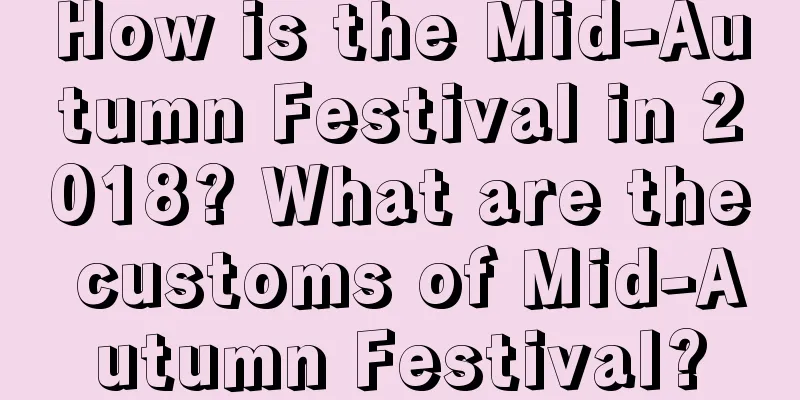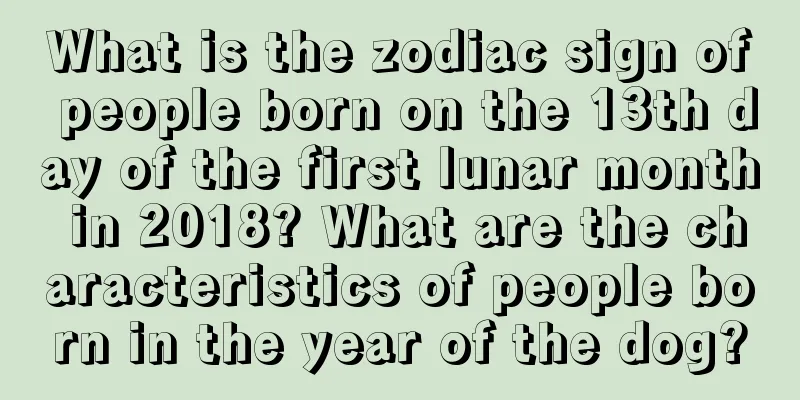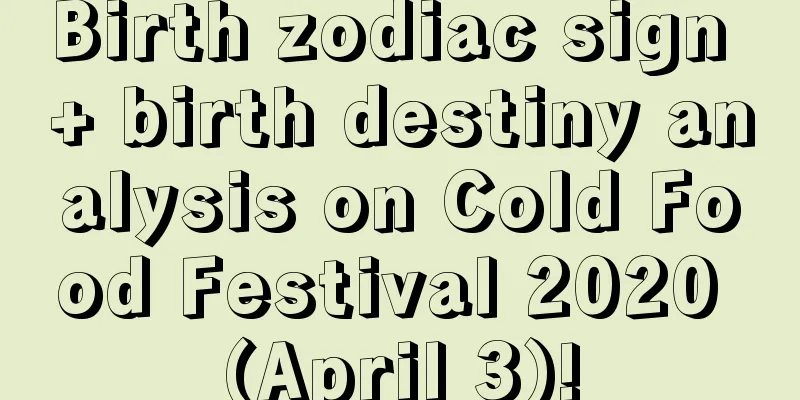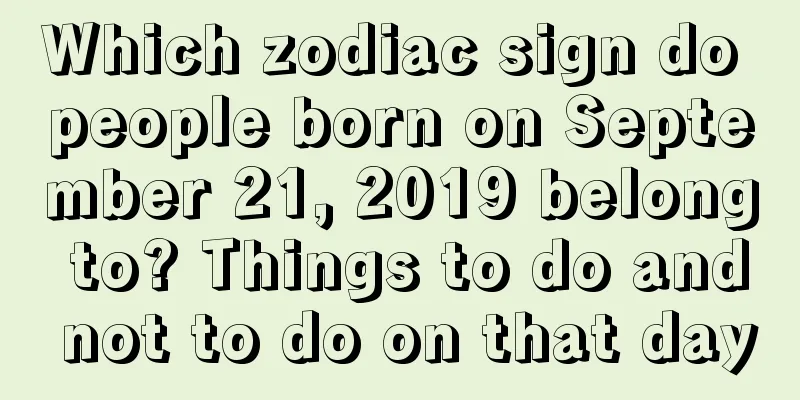How is the Mid-Autumn Festival in 2018? What are the customs of Mid-Autumn Festival?

The fifteenth day of the eighth lunar month every year is the traditional Mid-Autumn Festival. This is the middle of the autumn season, so it is called Mid-Autumn Festival. How is the Mid-Autumn Festival in 2018? What are the customs of Mid-Autumn Festival? The eighth month of the lunar calendar in 2018 has arrived, and the autumn wind has risen again. The autumn wind has inadvertently dyed the earth as beautiful as a painting: the colors are scattered, the forests are dyed with red leaves, and the clusters are like brocade and clouds. Mr. Shui Mo spends every day with you.Analysis of the Mid-Autumn Festival in 2018:August 15, 2018 (Lunar calendar)September 24, 2018, Monday Libra (Gregorian calendar) 【Today’s lunar calendar is suitable】 [Do not use it on days when death is a serious matter] Accepting wealth, hiding treasure, accepting marriage proposals, seeking an heir, setting up a bed, seeking medical treatment, offering sacrifices, fasting and offering prayers, migrating, attending school, planting, and signing a contract [today's taboos in the old almanac] [Do not use it on days when death is a serious matter] Opening the market, traveling, seeking wealth, building, raising livestock, breaking ground, buying property, building embankments, releasing water, opening warehouses, burials, auspicious gods to go to: Baoguang, Daming, Shengqi, Shiyang, Tiancang, Yinde, evil spirits to avoid: Fan Gong, Jiukong, Shousi, Tufu, Wuxu, God of Wealth, God of Fortune: Northeast, God of Fortune: Due South, God of Wealth: Due North Mid-Autumn Festival customs:1. Watching the tide:In ancient times, in addition to moon-watching during the Mid-Autumn Festival, watching the tide was another major Mid-Autumn Festival event in Zhejiang. The custom of watching the tide during the Mid-Autumn Festival has a long history. As early as the Han Dynasty, there was a very detailed description of it in Mei Cheng's "Seven Hairs". After the Han Dynasty, the custom of watching the tide during the Mid-Autumn Festival became more popular. There are also records of watching the tide in Zhu Tinghuan's "Supplement to Wulin Old Stories" in the Ming Dynasty and Wu Zimu's "Dreams of the Southern Song Dynasty" in the Song Dynasty. 2. Light the lamp: On the night of Mid-Autumn Festival, candles are lit in lanterns tied with ropes to bamboo poles and erected high on the eaves or terraces. Small lanterns are also used to form words or various shapes and hung high up in the house, commonly known as "Tree Mid-Autumn Festival" or "Vertical Mid-Autumn Festival". The lanterns hung by wealthy families could be several meters high, and the family members would gather under the lanterns to drink and have fun. Ordinary people would put up a flagpole and two lanterns, also to have fun. The city is full of lights, like a world of glass. "It seems that from ancient times to the present, the scale of the custom of lighting lanterns during the Mid-Autumn Festival seems to be second only to the Lantern Festival. 3. Guess the riddle: On the full moon night of the Mid-Autumn Festival, many lanterns are hung in public places, and people gather together to guess the riddles written on the lanterns. As this is a favorite activity for most young men and women, and love stories are also told during these activities, guessing lantern riddles has also evolved into a form of love between men and women. 4. Eat mooncakes: Moon-watching and moon-eating are essential customs for the Mid-Autumn Festival in various parts of China. As the saying goes, "The moon is full on the 15th day of the eighth month, and the Mid-Autumn mooncakes are fragrant and sweet." The word mooncake originated from Meng Lianglu by Wu Zimu in the Southern Song Dynasty. At that time, it was just a kind of snack food. Later, people gradually combined moon-watching with mooncakes, symbolizing family reunion and expressing longing. At the same time, mooncakes are also an important gift for friends to keep in touch during the Mid-Autumn Festival. 5. Burning tower: The game of burning tile lanterns (also known as burning flower towers, burning tile towers, and burning foreign towers) is widely spread in the south. As recorded in Volume 5 of the Records of Customs of China: In Jiangxi, "On the night of the Mid-Autumn Festival, children usually pick up tiles in the wild and pile them into a round tower with many holes. At dusk, they put firewood in the tower under the bright moon and burn it. When the tiles are red hot, they pour kerosene on the fire, and in an instant, the whole field is red and bright as day. 6. Appreciating osmanthus and drinking osmanthus wine: People often eat moon cakes and appreciate sweet osmanthus during the Mid-Autumn Festival, and eat various foods made with osmanthus, with pastries and candies being the most common. On the night of the Mid-Autumn Festival, gazing up at the red osmanthus in the moon, smelling the osmanthus fragrance, drinking a cup of osmanthus honey wine, and celebrating the sweetness of the family have become a beautiful enjoyment of the festival. In modern times, people mostly use red wine instead. |
<<: Is the Mid-Autumn Festival 2018 a good day? What is the hexagram of the day?
>>: What is the Mid-Autumn Festival and what are the customs of the Mid-Autumn Festival
Recommend
Is it a good idea to pick up the car on September 14, 2018?
The ninth month of the lunar calendar this year i...
Is it not suitable to move house on September 8, 2019, the day of Bailu? Which zodiac sign is in conflict with Bailu in 2019?
Introduction: Moving is a big deal, so you must ch...
Is May 12th of the lunar calendar 2019 a good day? Is today an auspicious day?
Introduction: Every day unfolds differently, and e...
How did the leap April come about? Can I celebrate my birthday twice in the leap April of 2020?
Introduction: The origin of leap April is also ver...
What is the ninth day of the sixth lunar month in 2019? Is it a good day to travel far away?
In the sixth lunar month, there are heat waves and...
Is it okay to move house on July 14, the day before the Ghost Festival in 2020? Is it not suitable to move house in the seventh month of the lunar calendar?
Introduction: Generally, you need to choose an aus...
What zodiac sign will you be born on Women’s Day in 2022, and what are your biggest characteristics?
March 8th Women's Day is an international holi...
Is August 29th of the lunar calendar in 2019 suitable for opening a business?
If you want to succeed in your career, you must c...
What to eat on the fifth day of the Lunar New Year? What festival is on the fifth day of the Lunar New Year?
Introduction: The fifth day of the Lunar New Year ...
Is it okay to get married or engaged on the eighth day of the eighth lunar month in 2020? Is it a good day?
The eighth month of the lunar calendar is halfway...
Where is the auspicious direction for the God of Wealth on the second day of the first lunar month in 2017?
Introduction: People in many places in our country...
Is it possible to get married in February of the lunar calendar in 2022? When is the best day to get married?
The second month of the lunar calendar is also kno...
Is the fourth day of November 2021 a good day for the snow solar term? Is it suitable to travel on this snowy day?
The arrival of the eleventh month of the lunar cal...
What is the fate of a child born on May 11th of the lunar calendar? Any luck?
Introduction: Although each child cannot choose th...
What zodiac sign will you be if you were born in the twelfth month of the lunar calendar in 2020?
What zodiac sign will you be if you were born in t...









